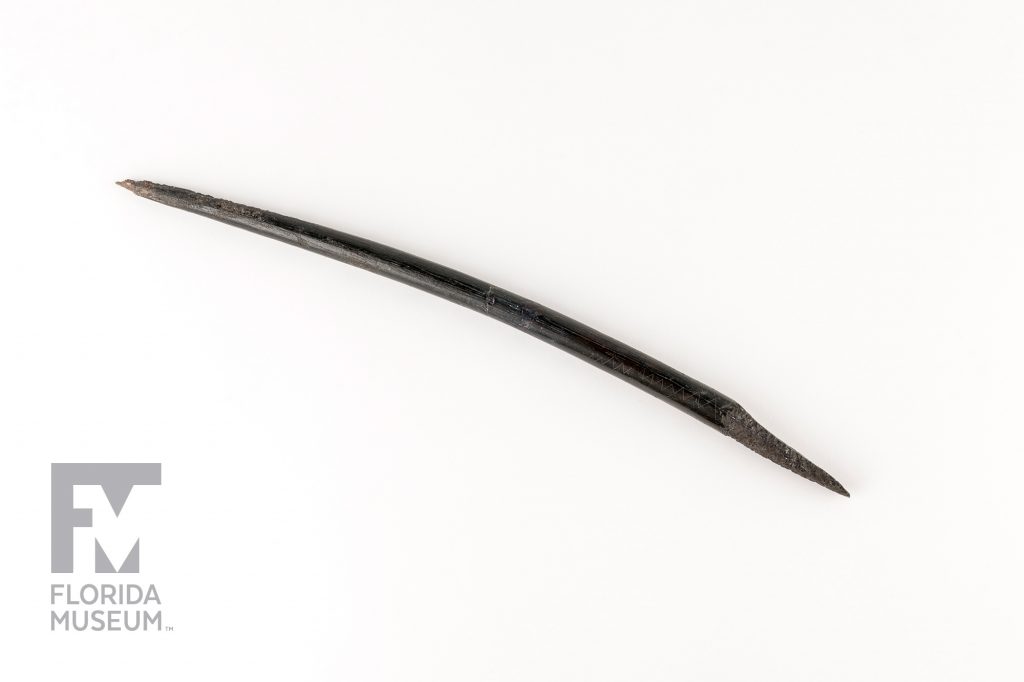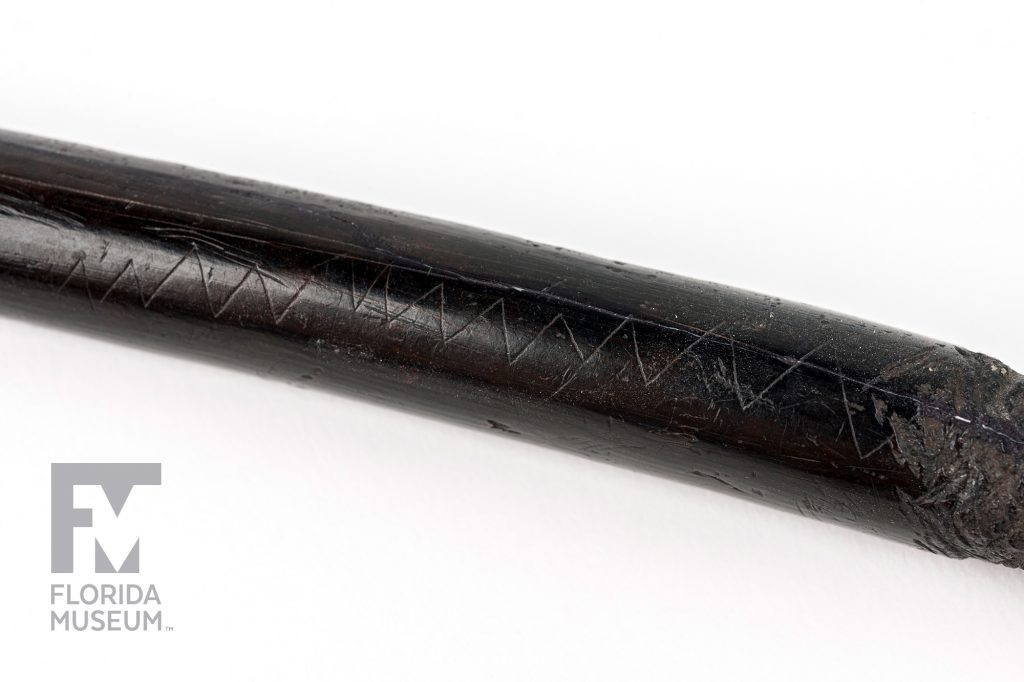This object is on permanent display in the Florida Fossils: Evolution of Life and Land exhibit, located in the End of the Pleistocene corner case.
Summary
Mammoth Ivory Point with Incised Pattern
From Jefferson Co., Florida
Lived/Made ~12,000 years ago
Collection
Story
Among some of Florida’s earliest and rarest evidence of human occupation have been ivory shaft tools recovered from rivers. The incised ivory tusks, scientifically referred to as proboscideans, shows hasher or zigzag markings at one end and tapering at the other. Both are evidence of human craftsmanship. Such ivory shaft tools reveal the interaction between the earliest people to Florida and extinct Pleistocene fauna, pushing the earliest human sites further and further back, upwards of 14,500 years ago.
This example was recovered from an inundated site in the lower Aucilla River where over 50 other fragmentary pieces were recovered. Florida has almost half of the academically recorded specimens in North America, although the complete specimen on display is rare. Similar shaped tools of bone and ivory have been found across Florida as well as sites in Texas and as far away as Alaska, with similar forms suggesting to researchers that they are contemporaneous and may have had similar functions. They have been found in close context with some tools called Clovis points that were also associated with now-extinct Rancholabrean fauna dating to the late Pleistocene, supporting views that the first Floridians and last proboscideans coexisted.
While these artifacts vary in size, some complete shafts have been measured at 30 cm long and exhibit a tapered or narrowed point at one end and a flat, beveled area for hafting or latching onto a pole or into a socket at the other. Few have the added hasher markings as can be seen on this specimen. These could’ve been simple or compound tools used for hunting or defense. Various discussions and hypotheses exist as to their function. Some suggestions include their use as ornaments, others as points, foreshafts and barbs. And it’s possible that these were multipurpose items with one or more uses. Experimental research and replication studies have and are addressing curvature and breakage patterns, minimally, as these hypotheses for ivory as foreshaft point and/or barb are tested.
Donna Ruhl
Collections Manager, Florida Archaeology and Bioarchaeology*
Archaeobotanist, Environmental Archaeology*
Florida Museum of Natural History
Exhibit
On display Sept. 23, 2017-Jan. 7, 2018, Rare, Beautiful & Fascinating: 100 Years @FloridaMuseum celebrated the Museum’s rich history. Each Museum collection was asked to contribute its most interesting items and share the stories that make them special. Though the physical exhibit is closed, this companion website remains online, providing an opportunity to experience the Florida Museum’s most treasured specimens.
Exhibit Area: Always on Display
 Want to see more? Explore more than 300 breathtaking color photos of plants, animals, fossils and cultural heritage materials from the Florida Museum of Natural History’s collections in the award-winning book All Things Beautiful available from the University Press of Florida.
Want to see more? Explore more than 300 breathtaking color photos of plants, animals, fossils and cultural heritage materials from the Florida Museum of Natural History’s collections in the award-winning book All Things Beautiful available from the University Press of Florida.
*This title was accurate at the time the exhibit was on display in 2017. Please visit the collection website to verify current staff and student information.

